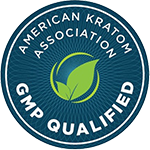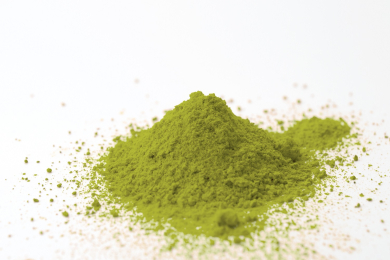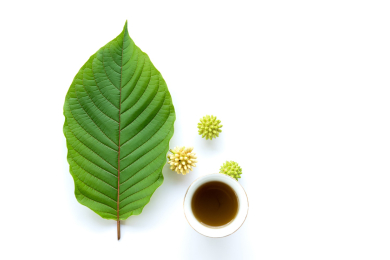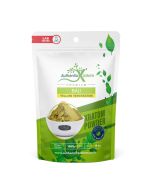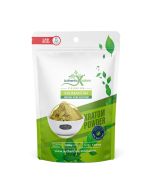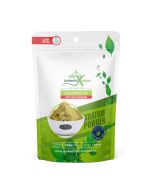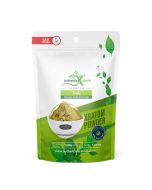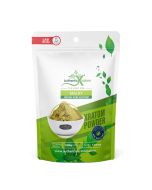- Buy any two kratom products, get 3rd one FREE
- There's No Minimum for Free Standard Shipping at Authentic Kratom
- Same Day Shipping. Order before 2:00 PM Pacific Time (M-F)
- Free Priority Mail Shipping on Orders $75 or more
- FREE 2 Day Shipping on orders $200 or more
- Buy Fresh & Potent Kratom Tea
What You Need To Know About Kratom Alkaloids
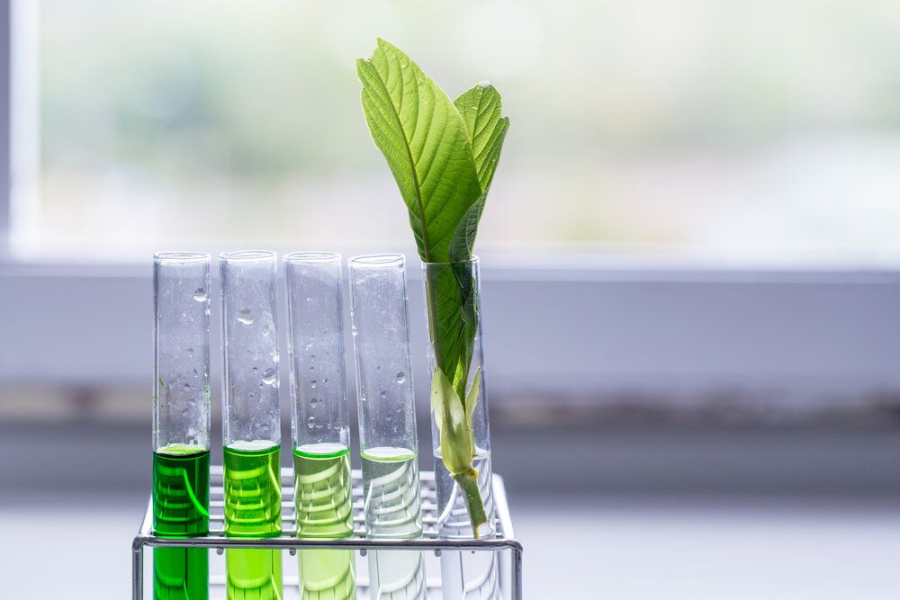
Why trust Authentic Kratom
- 10 years of experience in the kratom industry
- High expertise confirmed by a partnership with the American Kratom Association
- Only lab-tested and GMP-qualified products
- Reviewed and Trusted by thousands of customers
Have you ever given much thought as to how we would ever survive without Mother Nature? Indeed, she has proven to be a priceless gift - an irreplaceable miracle that keeps giving. The deeper you explore, the more you will continue discovering a diverse wealth of amazing useful organic resources - from sensational spices, spectacular ornamental plants, juicy fruits, and all-healing kratom alkaloids and also medicinal shrubs. You name it!
You can always be sure to find something for every need amongst nature’s array of beneficial organic substances. The Kratom tree is one such valuable asset.
If you are someone who loves to dabble into herbal supplements, chances are you’ve already caught a whiff of the Kratom tree. But how much do you know about this power-packed plant promising immense therapeutic potential?
If your answer is “not much,” then don’t worry. This article has got you covered. It takes a comprehensive look at the Kratom tree and its chemical constituents. After all, it is important to know what you’re investing in when you plop down your money for a Kratom product.
But First And Foremost, What Is Kratom?
Kratom, scientifically known as Mitragayna Speciosa, is a tropical evergreen tree native to South-east Asian countries including Thailand, Malaysia, Myanmar, Indonesia, and other Asian regions. There, the plant is famous as Biak, Ketum, Ithang, Kakuam, or Korth in the local languages.
History has it that locals of these countries were the first to discover some of the remarkable effects of Kratom leaves. They were habitual of chewing the raw leaves to alleviate the toll of hard labor and reduce fatigue.
Fast forward several years later, Kratom has become a household name in the herbal industry. It serves as a medicine in some quarters and a recreational drug in others. Kratom products mostly come in ground leaves or powdered form.
Today, Kratom has received overwhelming clinical attention and has emerged as the most widely studied and researched subject. However, many of its alleged benefits are yet to be proven through proponents claim that several of these benefits actually hold true provided the substance is administered properly.
These include improved mood, relaxation, alertness, and increased energy. Some also claim that the plant has effects resembling a mild stimulant when taken in low doses and offers a like high when consumed in higher amounts.
So, while a lot of its benefits are still unproven, anecdotal evidence significantly supports a lot of positive effects of taking Kratom.
Researchers claim this process reduces people’s ability to perceive discomfort. So, does this mean you could be suffering another migraine attack and yet not feel a thing if enough Kratom is coursing through your blood? Well, this really depends and I hope you experiment yourself.
Kratom Alkaloids
Don’t fret. This section isn’t structured to bombard or bore you with loads of chemical and biological jargon. It merely intends to give you a short overview of the components in Kratom that lend it the signature power and properties. Hopefully, the information will dig deeper and provide a holistic understanding of what you can expect from taking Kratom products.
All plants consist of chemical compounds called phytochemicals. Alkaloids are a particular type of phytochemicals found in certain plants like ergot, poppy, and Mitragayna Speciosa. 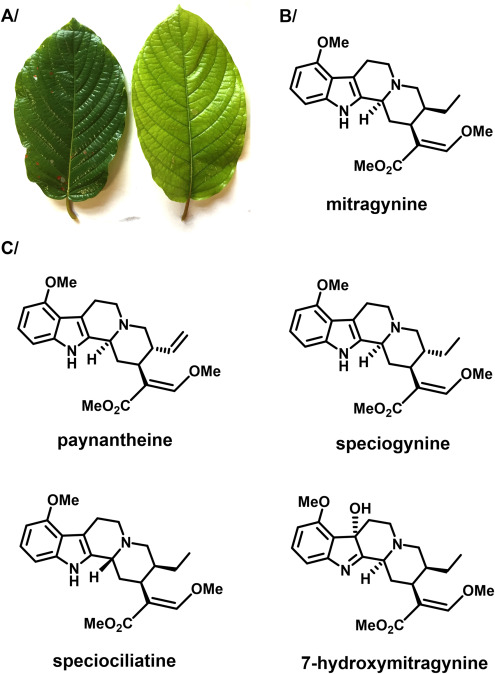
Over the years, alkaloids have acquired a prominent spot in the field of scientific and medical research due to their extensive physiological impact on our bodies upon ingestion. No wonder, why they have increasingly captured the attention and interests of scientists and researchers alike.
Alkaloids are the chief impactor of some of the most popular substances out there. For example, caffeine, present in coffee beans and tea leaves, is an alkaloid.
Another typical example is morphine, which comes from opium poppies. Although both examples perform somewhat contrasting functions, they both significantly affect other living organisms. Likewise, the alkaloids found in Kratom are no different.
Numerous studies have revealed that there exist more than forty alkaloids in Kratom. However, there are several factors at play that can alter the concentration of these alkaloids from plant to plant.
The differences can be attributed to the variety of Kratom strains, types, geographical location, weather conditions and even the leaf harvest periods.
But that’s not all. Alkaloid content can vary even among leaves of the same tree. This can result from factors like the rainy or dry season’s duration and the elapsed time between harvests.
List Of Best Kratom Alkaloids
Kratom contains over 40 distinct alkaloids. While many of these are unique, a lot of them are also found in other plant species.
Let’s take a quick look at some of the primary alkaloids and their alleged functions. We’ll start with the two fundamentals responsible to trigger the bulk of Kratom’s effects when ingested.
It is responsible for the majority of Kratom’s reaction with negligible abuse potential. And, perhaps that’s what steals the highlight. Besides, other studies confirm that it possesses relieving, antimalarial and antidiarrheal properties.
It is believed that Green and White vein kratom strains have the most abundant levels of Mitragynine.
2) 7-hydroxymitragynine: This is another principal alkaloid in Kratom that lends a significant physiological impact. However, it constitutes a far less percentage (roughly 2%) of the total alkaloid content in the plant.
And, the ratio only increases as the plant ages. Unfortunately, unlike Mitragynine 7-hydroxymitragynine is a chemical that has demonstrated slight abuse potential and drug dependency. Further, in the experiments carried out, it has exhibited analgesic effects that exceed the potency of morphine.
Another key difference between the two is 7-hydroxymitragynine increases as the plant grows, whereas the Mitragynine levels are highest during Kratom’s first few years of existence. Finally, the effect of this alkaloid wears off faster than that of Mitragynine.
Apart from the two discussed above, the following are some more Speciosa Alkaloids forming a small chunk of the total chemical profile. As such, they are still being studied, and so little or no information is available on their effects. Some of these alkaloids include:
3) Paynantheine: It is the second most occurring compound representing 8.6% to 9% of the plant’s total alkaloid content. It is widely cherished for possessing excellent muscle relaxing properties.
4) Speciogynine: This accounts for 6.6% to 7% of Kratom leaf’s alkaloid content and possibly contributes to muscle relaxation.
5) Mitraphyline: It is believed to act as a vasodilator, an antihypertensive, a diuretic, and a muscle relaxer and forms less than 1% of kratom’s total alkaloid balance.
6) Isomitraphylline: Despite its minute presence (less than 1%) in the overall alkaloid profile, Isomitraphylline is a rather special one. Proponents argue that it beefs up the body’s immunity against diseases.
7) Speciophylline: Constituting less than 1% of the alkaloid content in Kratom, there is ample proof hinting that Speciophylline features anti-leukemic properties.
8) Rhynchophylline. – Again, it is a minor alkaloid with less than 1% proportion but not any less beneficial. It helps dilate the blood vessels, mitigate hypertension, and treat parasitic worms.
9) Isorhynchophylline – Here’s another alkaloid that is believed to help improve the body’s immunity and possibly offer antihypertensive benefits too. It represents less than 1% of the Kratom leaf’s alkaloid content.
10) Ajmalicine. It reportedly aids in muscle relaxation, douses hypertension, and produces a calming effect.
11) Akuammiginen: Research suggests it has antimalarial benefits.
12) Ciliaphylline: Here’s another alkaloid with possible relieving functions.
13) Corynoxine A and B: Both are thought to act as sedatives and may also help stifle the development of Parkinson’s.
14) Epicatechin: Well, this one truly deserves a mention. Numerous studies have revealed that Epicatechin helps put up a determined fight against bacterial infections, diabetes, and inflammation.
And that’s not it! Other foundational research claims it could contribute to muscle growth and strength.
15) Isoteropodine: Experts claim that it strengthens the immune system and works as an effective antimicrobial agent.
16) Speciofoline: It is believed to possess excellent relieving effects.
Apart from the list above, other alkaloids naturally occurring in the Kratom tree include Speciociliatine, Mitrafoline, Mitraciliatine, Isospeciofoline, Mitraversine, Corynantheidine, and Tetrahydroalstonine.
How Alkaloids Contribute To The Formation And Effects Of Kratom Colors And Strains?
Remember, when it comes to achieving your desired impact from Kratom Supplements, the alkaloids at play are KING!
Variations in alkaloid content are the reason why there exist a plethora of distinct Kratom species (more commonly known as Kratom strains) and why each of these lends different impacts. The plant contains the highest levels of Mitragynine at its earliest growth stages during which the leaves sport white veins.
Next, as the plant matures, the veins turn greener (and so you have green-vein kratom). Finally, the veins turn red once the tree attains full maturity, and thus, red vein kratom is born. Throughout this period, the alkaloid balance tends to shift giving rise to variations in impact.
a) White Vein Kratom: Do you know White Vein Speciosa Products are a popular coffee replacement throughout the globe? With their impressive pick-me-up impact, they work as an excellent early morning energizer or booster to improve your focus, concentration and energy for the rest of the day.
b) Green Vein Kratom: The enchanting Greens promise to offer “the best of both the worlds” - the mild relieving and relaxing impact of the Red combined with an instant energy boost of a typical White.
c) Red Vein Kratom: The most potent among all, Red Speciosa is deemed as a natural therapy for discomfort and other disorders. It envelops us with utmost relaxation and sedation that lasts for an unbelievably long time.
From these three major colored types of Kratom, you then have several strains. Some of the most common ones are Maeng Da Kratom, Thai Kratom, Bali Kratom, Borneo, Red Vein Indo, Red Bali, etc.
Final Words
Phew! Did you just feel like finishing a boring Chemistry chapter? Well, we surely can’t blame you if you do.
The article sheds a brief light on the forty known alkaloids naturally occurring in Kratom and their complicated pharmacology. Amongst these, Mitragynine, 7-hydroxymitragynine, Paynantheine and Specigoynine are the most notable ones. Together, this makeup approximately 84% of kratom’s total alkaloid balance.
For the rest, their toxicological and pharmacological data is quite limited. So, the information provided herein is sufficient to know.
And having read that, there is absolutely no need to cram their names in your head. Though it won’t hurt to have some of the vital points and alkaloids at your fingertips.
It is also worth mentioning that the alkaloid balance differs significantly from strain to strain, and color to color. Even within the same colored vein and strain, the concentration can vary based on human factors.
Also, bear in mind that kratom is still a subject of ongoing research. As such, many of its highlighted effects remain largely under question. Nevertheless, it is a wonderful botanical agent worth giving a try. And honestly, who wouldn’t?
The only key is to shop online the highest quality Kratom product grown under the most ideal conditions that yield maximum alkaloid balance.
And Authentic Kratom is a great one-stop-shop for the best alkaloid-rich Kratom in town. Plus, our product line has been proven, tested and verified by the most trusted laboratories. What else can you wish for?

